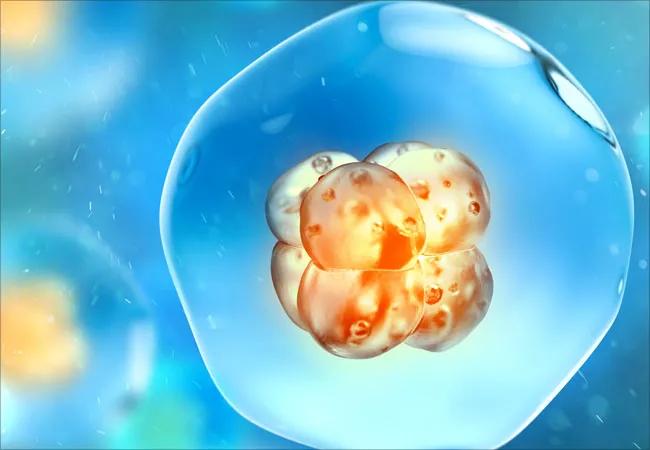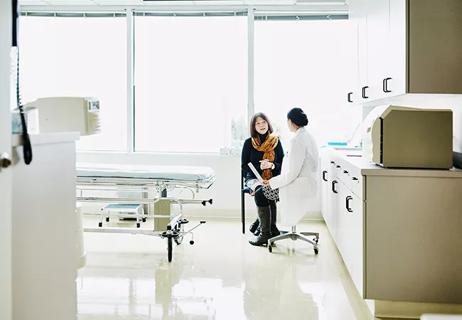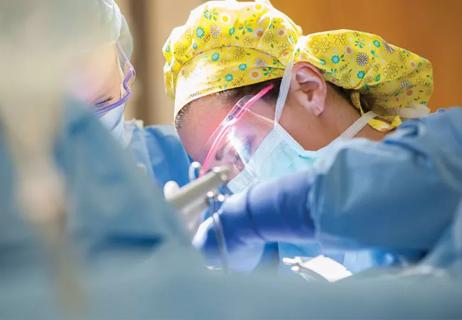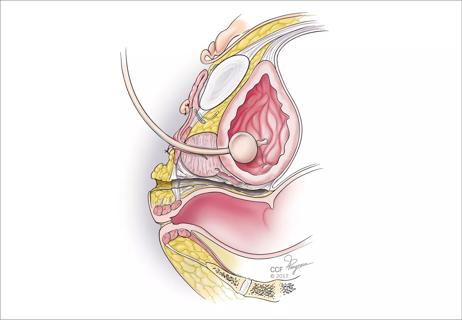Advertisement
Large randomized study compares embryo growth kinetics and live birth rates between culture media

In vitro fertilization (IVF) has been vastly improved over the past few years with a transition to blastocyst state cryopreservation and transfer, according to Nina Desai, PhD, HCLD, IVF Lab Director at Cleveland Clinic. “Our IVF program now does 100% blastocyst stage transfers, which requires confidence in the culture system as well as significant laboratory skill to create high-quality embryos capable of growing in vitro for five to six days.”
Advertisement
Cleveland Clinic is a non-profit academic medical center. Advertising on our site helps support our mission. We do not endorse non-Cleveland Clinic products or services. Policy
Dr. Desai also reports that the IVF lab at Cleveland Clinic now performs mostly single embryo transfers, which has reduced the rate of multiple pregnancies. Another trend is a shift toward performing more frozen rather than fresh embryo transfers. “Cryopreservation by vitrification has been a major factor in improving embryo survival and implantation potential,” she explains. “We use a special device called the Rapid-I that allows us to freeze an embryo by suspending it in < 1 μL of fluid, which permits extremely rapid cooling to -196oC. In turn, these rapid cooling and warming rates prevent ice crystallization and damage to the embryo. With this new technique, our pregnancy rate with frozen embryos is now equal to, or sometimes higher than, that of fresh embryo transfers.”
A factor that favors use of frozen embryos over fresh is that it allows clinicians to prepare a more physiologically receptive uterine environment, since the embryo transfer is not done the same cycle as the ovarian stimulation, explains Elliott G. Richards, MD, Director of Reproductive Endocrinology and Infertility Research in Cleveland Clinic’s Women’s Health Institute.
To further advance IVF practice, Drs. Desai and Richards, along with colleagues Meng Yao, MS, and Jeffrey M. Goldberg, MD, recently conducted the largest prospective randomized study to date of embryo development and live birth rates between sibling embryos cultured in two different single-step media. The paper was published in Fertility and Sterility.
“We examined and compared the dynamics of embryo growth in more than 10,000 embryos,” Dr. Desai says. Sibling embryos were divided randomly between two different single-step culture media (G-TL and global media). Timing of embryonic genomic activation and ultimately progression to blastocyst were observed using a time-lapse (TL) incubator, which allows continuous, undisturbed culture without medium refreshment. The advantages of a TL incubator over a traditional incubator are that embryologists can constantly monitor the embryos hands free, observe any anomalous events and make more objective comparisons of embryos having similar morphologies at a specific time by viewing TL video footage. “We believe that using a single-step medium and the TL incubator may reduce stress on an embryo,” she reports.
The study persisted for two and a half years, proceeding on to embryo implantation and analysis of live birth rates and birth weight.
“There are many variables that go into the successful growth of embryos, pregnancy rates and live births, many of which are beyond our control, but here we examined an important variable we could control — the culture media,” says Dr. Richards. “What’s really novel about this study is that it had such a large sample size and looked prospectively at live birth outcomes. Other studies have compared culture media in the IVF lab, but not at this scale or with this longitudinal follow-up.”
Advertisement
The results showed little difference between the two culture media in terms of implantation (58.7% for global medium for fresh embryos and 64.1% for frozen embryos, and 61.7% for G-TL medium for fresh embryos and 60.5% for frozen embryos) and live birth rates (54.2% with fresh transfers and 53.1% for frozen transfers with global medium and 51.1% and 50%, respectively, for G-TL medium).
The only observed difference was that culture in global medium resulted in an overall higher percentage of good quality blastocysts for cryopreservation.
Dr. Richards notes that as more labs move to use of a TL incubator, having information about the optimal choice for a single-step medium becomes more important. “It’s clinically useful information that the global medium and the GT-L medium, which is specially formulated for use with the TL incubator, are comparable in terms of the outcome that matters most — live birth.”
“Although the morphokinetics of embryo development may vary between media, our study shows that these differences do not always dictate superiority of one media over another,” concludes Dr. Desai. In addition, the study demonstrates that transferred blastocysts derived from both culture media have similar pregnancy and live birth potential.
The study also corroborates that use of frozen embryos results in higher birth weights than does the use of fresh embryos. “This phenomenon was reported over a decade ago, but the reasons are still unclear,” says Dr. Richards. “It’s likely due to epigenetic changes that can’t be easily measured. Studies agree that there doesn’t appear to be any higher risk of adverse perinatal outcomes, but the implications of increased birth weights for the long-term health of infants born from frozen embryos certainly deserves more investigation.”
Advertisement
Advertisement

Deprivation is linked to impaired glucose intolerance and racial disparities

Artesunate ointment is safe well and tolerated patients with vulvar intraepithelial neoplasia

A case-based discussion of efficacy, eligibility and use

Workshop curriculum was valued by some, while others would have preferred time for themselves

Study finds lower incidence of endometriosis than in cisgender patients

Surgeon experience is key to reducing adverse events

Introducing Laura Detti, MD, newly appointed Chair of the Department of Subspecialty Care for Women’s Health

Provides an alternative for women who cannot or will not use estrogen, but at a price